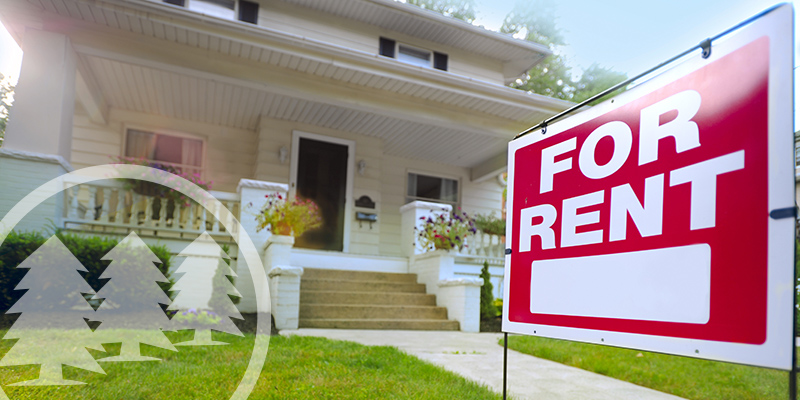It is important for every homeowners association to establish restrictions on rentals in the community. But, what should your HOA rental restrictions even consist of?
What to Include in Your HOA Rental Restrictions
Homeowners associations would do well to regulate rentals in their communities. As many know, rentals can negatively impact the value of properties in your association. The reasoning behind this, of course, is that tenants are less likely to care for the property or follow the rules since they don’t have a stake in the community. Other owners may also feel wary of constantly changing neighbors, particularly for short-term rentals.
Regulating HOA rentals, though, requires precision and clarity. It is imperative to decide on your association’s exact policies and then outline them in clear terms. But, what should HOA rental restrictions even include?
1. Explain the Type of Restriction
First, you will need to decide on the type of rental restriction you will adopt. There are five general types:
- No Rentals at All. This is a total ban on rentals, be it short- or long-term. Under this type, no owner is permitted to rent out their home to another party.
- Percentage-Based. This allows only a certain percentage of homes in the community to be rented out. While a common approach to rentals, it is rather difficult to enforce.
- Term of Ownership. This only allows an owner to rent out their home after they have owned it for X number of years. Others have occupancy terms instead of ownership terms, meaning the owner has to have lived in the home for X number of years before renting it out. With this setup, though, you will likely scare away investors.
- Minimum Duration Leases. This allows owners to rent out their homes or units for a minimum amount of time. It is common for HOAs to prohibit short-term rentals under 30 days, though that can change from one community to another.
- Limited Duration for Ownership Lifetime. This places a cap on the total years an owner can rent out their place for the entire length of their ownership.
2. Make Limitations Clear
 After choosing the type of rental you will allow, the next step is to clearly explain the terms of that restriction. If there is a cap or a minimum duration, be specific.
After choosing the type of rental you will allow, the next step is to clearly explain the terms of that restriction. If there is a cap or a minimum duration, be specific.
This is particularly important for percentage-based limitations. If you say that your association will only allow 20 percent of homes to be rented at any given time, how many homes or units is that exactly?
3. Itemize Exceptions
You may allow certain exceptions to HOA rental restrictions. If so, make those exceptions clear to everyone. Explain how owners can qualify for those exceptions, too.
While you can say that any exceptions are “solely under the discretion of the board,” this can open another set of problems. Owners might question the board’s consistency in applying such exceptions. Before long, discrimination claims will arise.
Of course, that is not to say that you can’t use a catch-all clause like this. You can certainly do so, but make sure to use it in a consistent and uniform manner. Make decisions carefully because you will be setting a precedent. The wise route is to simply use this power on rare occasions. That way, you can reserve exceptions for reasons that really deserve them.
4. Define Terms
When you use vague terms in your HOA rental restrictions, owners are bound to challenge them. One resident might say that they are not renting at all; instead, they just have a long-term guest over.
To avoid such instances, it is paramount to define all of your terms as clearly and specifically as possible. What counts as a guest and what counts as a lease? How long can a guest stay over before it is considered renting? Can guests stay over without the owner at home? Perhaps you can also include a guest policy so that there is no confusion.
5. Explain Compliance and Non-Compliance
Another thing to include in your HOA rental restrictions is compliance. The policy should require tenants to also follow the association’s governing documents and rules, just like everyone else. Just because they are not technically “owners” does not exempt them from the rules.
You should also establish enforcement procedures for both the tenant and their landlord (owner). The landlord or owner must shoulder the responsibility if their tenant commits any violations. For example, if a tenant parks their car in the wrong spot, the owner should pay the fine. If the owner fails to pay the fine, the HOA can initiate collection efforts against the owner, such as placing a lien on the property.
It is important to include these provisions in your rental policy. That way, owners will not complain to the HOA for going after them instead of their tenants. Tenants come and go, so if the problem remains, the landlord/owner is the real issue.
6. Communicate Eviction Rights
Not all homeowners associations have the right to evict tenants. But, there are certain states, like Ohio, that grant HOAs the ability to evict tenants if they continue to violate the rules or if they commit serious violations. If your state permits it, then your rental policy should also reflect your right to evict.
In some states, the laws are vague or silent on the matter. In that case, you should talk to a local attorney about including eviction provisions in your rental policy. You may require owners to make the rules of the community clear to their tenants. If their tenants violate those rules, then owners must acknowledge that the HOA can use that as grounds for eviction.
7. Require a Copy of the Lease
 Another HOA rental regulation to add is requiring owners to submit a copy of the lease agreement to the association. This way, the HOA can have a record of the rental, along with the tenant’s name and contact details.
Another HOA rental regulation to add is requiring owners to submit a copy of the lease agreement to the association. This way, the HOA can have a record of the rental, along with the tenant’s name and contact details.
In addition to your governing documents, the lease should also indicate that the tenant agrees to adhere to the community’s rules.
Apart from simply having a record of details, asking for a copy of the lease also confirms the existence of the lease itself. Some owners are foolish enough to forgo signing a lease, which is a huge mistake.
A lease clearly defines the parties of the agreement and explains the terms of the lease. It can also protect the HOA in case of an absentee owner who stops paying their dues. You can require a provision in the lease saying the HOA can garnish the tenant’s rent in the event of nonpayment.
8. Require Tenant/Guest Registration
Your HOA board needs to know who is living in the community — tenants and guests included. This is where registration comes in.
Require all residents, including renters and guests, to register with the HOA or the manager. This way, you can have a list of all residents, along with their contact information. It is worth including in your policy that any unregistered persons are not permitted to enter common areas or facilities.
9. Elaborate on Enforcement
Finally, you should clearly explain your enforcement procedures. How will you enforce your HOA rental restrictions? Some key questions you need to answer include:
- How will you notify owners of a violation?
- What should owners do if they want to challenge the violation?
- How much will owners need to pay as a fine, if any, and how often will they need to pay it?
Even if you use the same enforcement procedures as other policies, it is still important to restate them in your rental policy. That way, there is no room for misunderstandings.
Knowing Where to Begin
Coming up with HOA rental restrictions can be difficult, especially when you are doing it from scratch. While you can certainly add more restrictions depending on your needs and authority, these nine inclusions are a good place to start.
Having trouble staying on top of rentals in your HOA community? Hire an HOA management company today. Call Cedar Management Group at (799) 252-3327 or contact us online to learn more about our services.
RELATED ARTICLES:
- HOA Fine Policies: What’s Reasonable And Legal?
- Are Group Homes In HOA Communities Allowed?
- Homeowners Rights Against HOA: Avoiding Conflict In The Community






